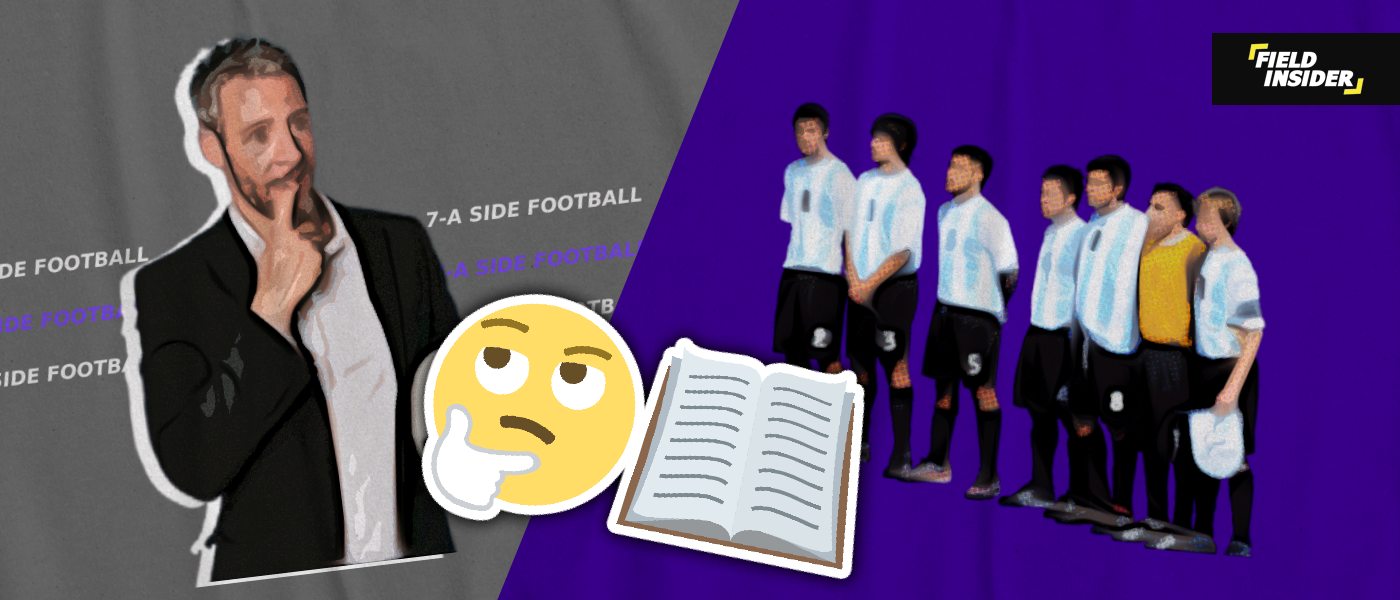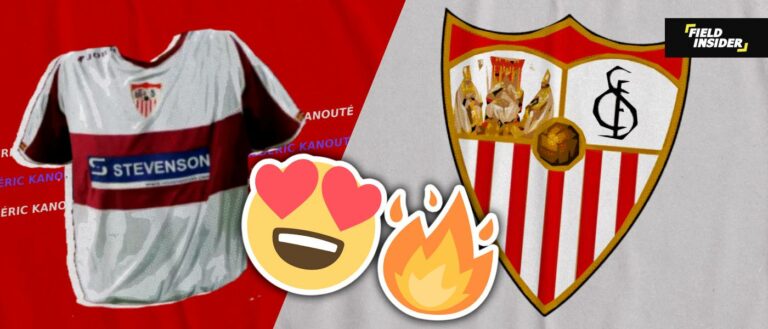Best 7-A-Side Formations: Ultimate Guide
Introduction
7-a-side football is captivating the hearts of players and fans alike, offering a faster, more accessible version of the traditional game. With its unique demands and strategic depth, the choice of formation can significantly impact your team’s performance and enjoyment of the match.
This guide aims to provide an in-depth analysis of the best formations for 7-a-side football, equipping you with the knowledge to unlock your team’s potential. Whether you’re looking to bolster your defense or enhance your attacking play understanding these formations will provide the foundation for your team’s success.
Key Takeaways
| Aspect | Description |
|---|---|
| 7-a-side Football | Fast-paced, requires specialized formations compared to traditional football. |
| Classic 2-3-1 Formation | Balanced for both defense and attack, ideal for controlled, methodical play. |
| Dynamic 3-2-1 Formation | Provides solid defense and quick transition, suitable for teams with strong midfield presence. |
| The Versatile 2-2-2 Formation | Offers an even spread across the pitch, allowing teams to adapt quickly between defense and attack. |
| Player Roles & Communication | Key to success; requires understanding of individual responsibilities and constant team coordination. |
| Tactical Flexibility | Essential for adapting to game flow and opponent strategies, highlights the need for versatile tactics. |
| Team Analysis | Assessing strengths and weaknesses is crucial in choosing the right formation. |
| Adaptation & Experimentation | Encouraged to find the best fit for your team’s unique characteristics and skills. |
Understanding 7-A-Side Football
Brief Overview of 7-A-Side Football
7-a-side football, a variant of the traditional game, emphasizes speed, agility, and strategy on a smaller pitch. With fewer players, individual skill and teamwork become increasingly important.
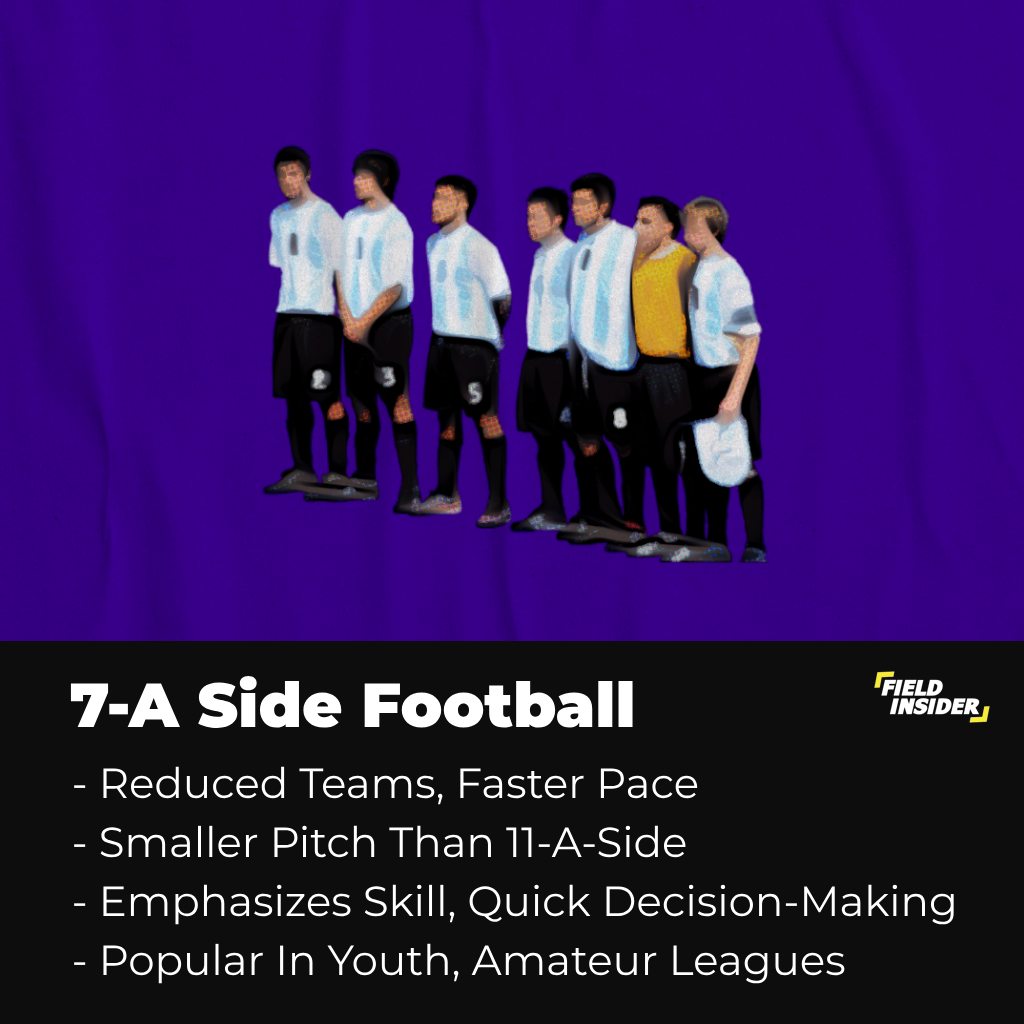
The game’s faster pace and more frequent player interactions provide a unique experience compared to standard 11-a-side matches. This format is particularly popular in youth leagues, adult amateur leagues, and as a training tool for larger format games.
Key Differences from 11-A-Side Football
The transition from 11-a-side to 7-a-side introduces notable changes: smaller teams, reduced pitch size, and often modified rules. These differences demand quicker decision-making, heightened spatial awareness, and versatile player roles.
The game’s pace is accelerated, leading to more direct engagement and opportunities for each player. Understanding these nuances is crucial for adapting strategies and techniques effectively.
Significance of Adaptation in Formations
In 7-a-side football, the importance of adapting formations cannot be overstated. Given the smaller playing area and fewer players, each player’s role becomes more fluid and multifaceted. A formation that works well in 11-a-side football may not translate directly to success in the 7-a-side format.
Teams must evaluate their strengths, weaknesses, and the specific dynamics of 7-a-side play to choose and adapt their formations wisely. This adaptability is key to addressing the game’s unique challenges and capitalizing on its opportunities.
Analyzing Top 7-A-Side Formations
The Classic 2-3-1 Formation
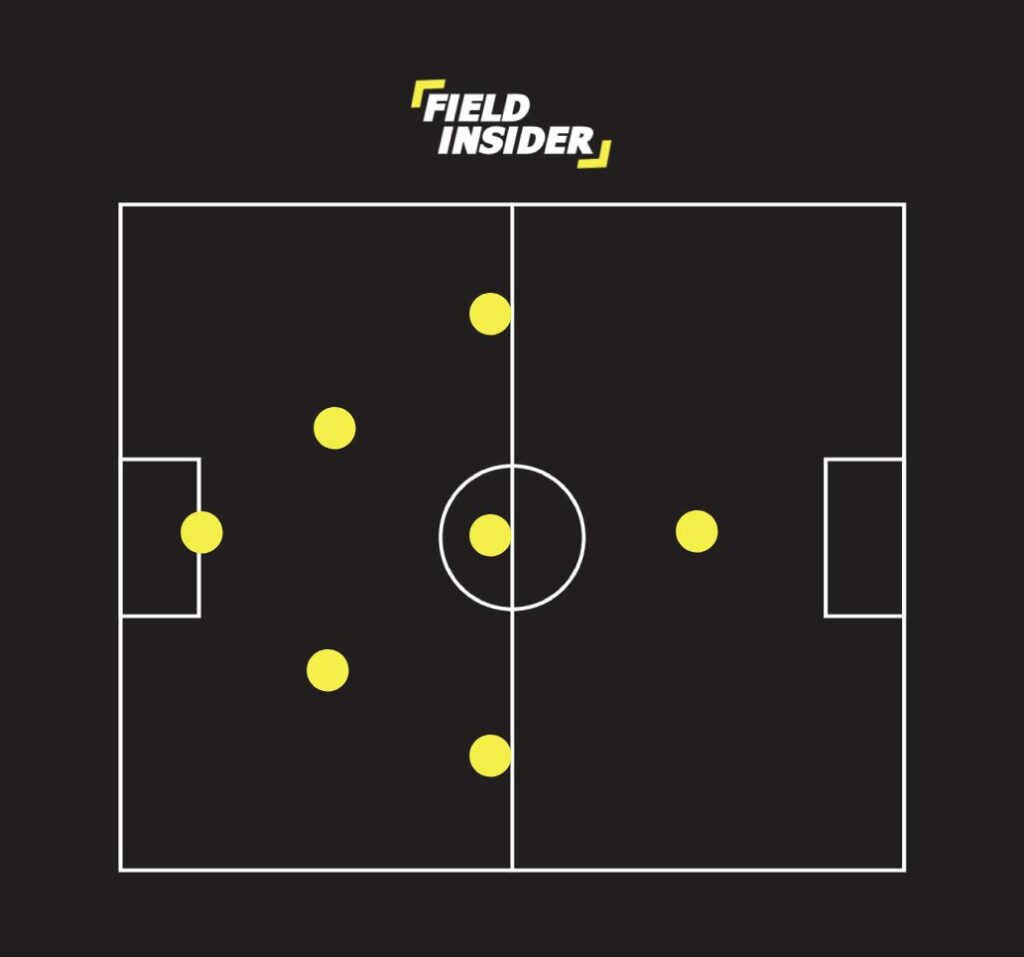
Strengths
The 2-3-1 formation offers a harmonious balance, particularly appealing for 7-a-side teams seeking both defensive solidity and offensive capability. This layout fosters a strong midfield presence, essential for controlling the game’s tempo and rhythm.
By effectively marshalling the central areas, teams can transition smoothly between defense and attack. This balanced approach is particularly advantageous for teams aiming to dominate possession and systematically break down their opponents.
Weaknesses
While the 2-3-1 formation provides numerous advantages, it is not without its vulnerabilities, particularly on the flanks. If the midfielders and defenders do not adhere strictly to their positional roles, there can be significant gaps for the opposition to exploit.
This issue becomes particularly pronounced when facing teams that excel in wide areas or when players neglect their defensive duties in pursuit of offensive gains. Therefore, maintaining discipline and ensuring players remain aware of their spatial responsibilities are critical to mitigating these weaknesses.
Ideal Playing Style
For teams utilizing the 2-3-1 formation, an ideal playing style is one that emphasizes controlled, patient buildup and strategic possession. This approach requires players skilled in maintaining possession under pressure, capable of precise passing, and adept at creating spaces through intelligent movement.
The formation is best suited to teams that prefer a methodical approach, slowly building attacks from the back and waiting for the opportune moment to strike. It is less about rapid, direct assaults and more about crafting opportunities through exploitation of any defensive lapses by the opposition.
The Dynamic 3-2-1 Formation
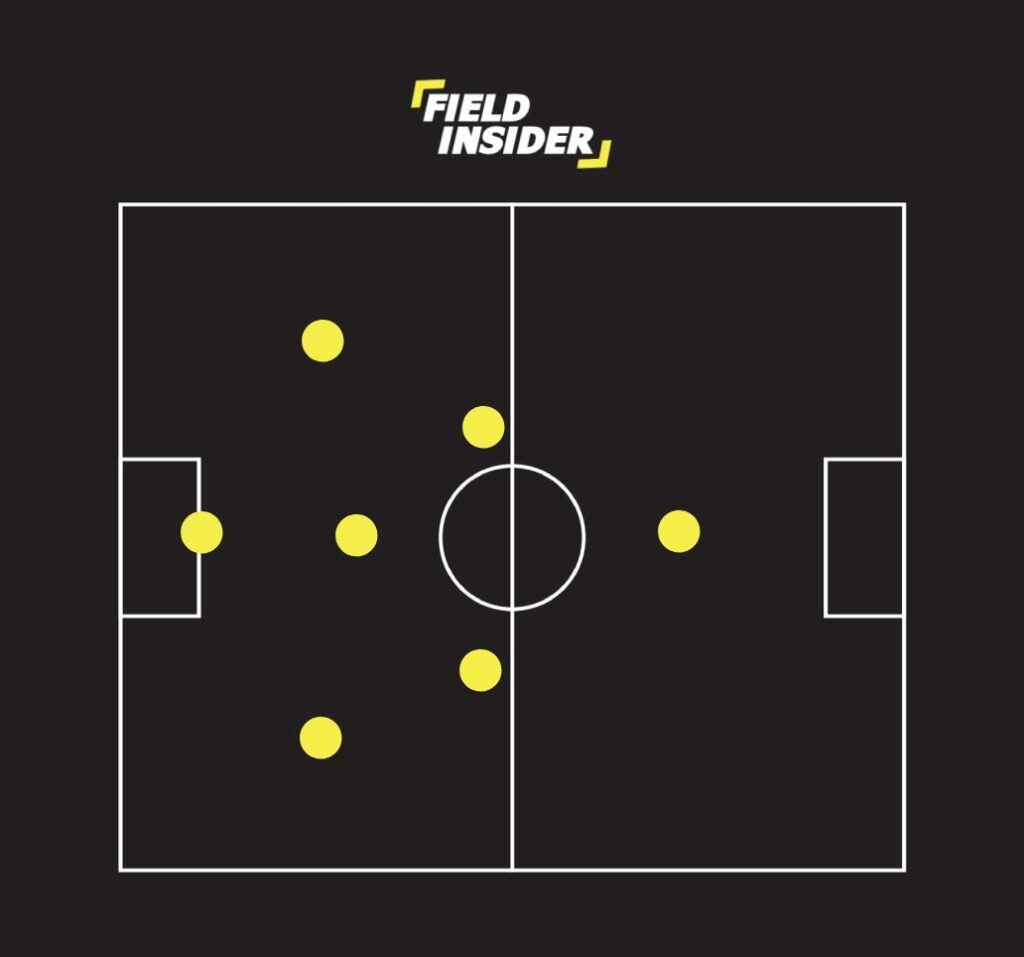
Strengths
The 3-2-1 setup is a powerhouse of defensive stability coupled with swift offensive capabilities. By aligning three defenders, the formation constructs a robust defensive wall, particularly against direct attacks. The two midfielders act as pivotal links, facilitating transitions from defense to attack efficiently.
This setup is perfect for teams that thrive on quick turnovers and exploiting counter-attack opportunities. The solidity at the back allows for aggressive pressing in midfield, making it a nightmare for opponents trying to break through.
Weaknesses
However, the 3-2-1 formation’s focus on defense and transition can sometimes stifle offensive variety. If the midfielders are heavily marked or bypassed, the team can struggle to supply their lone striker with opportunities. This can lead to isolation of the forward and a lack of scoring chances.
Teams employing this formation need to ensure their midfielders are versatile and capable of breaking lines, either by dribbling or precise passing. Without this, the formation can become too predictable and easy to defend against.
Ideal Playing Style
This formation is best utilized by teams that excel in disciplined defensive structures and rapid counter-attacks. It suits squads with strong, commanding defenders and midfielders who possess not only defensive acumen but also the ability to transition the play from defense to attack rapidly.
The single striker needs to be highly dynamic, capable of holding up the play and making intelligent runs. Teams that can master the balance between a solid defense and fast, efficient counter-striking find great success with the 3-2-1 formation.
The Versatile 2-2-2 Formation
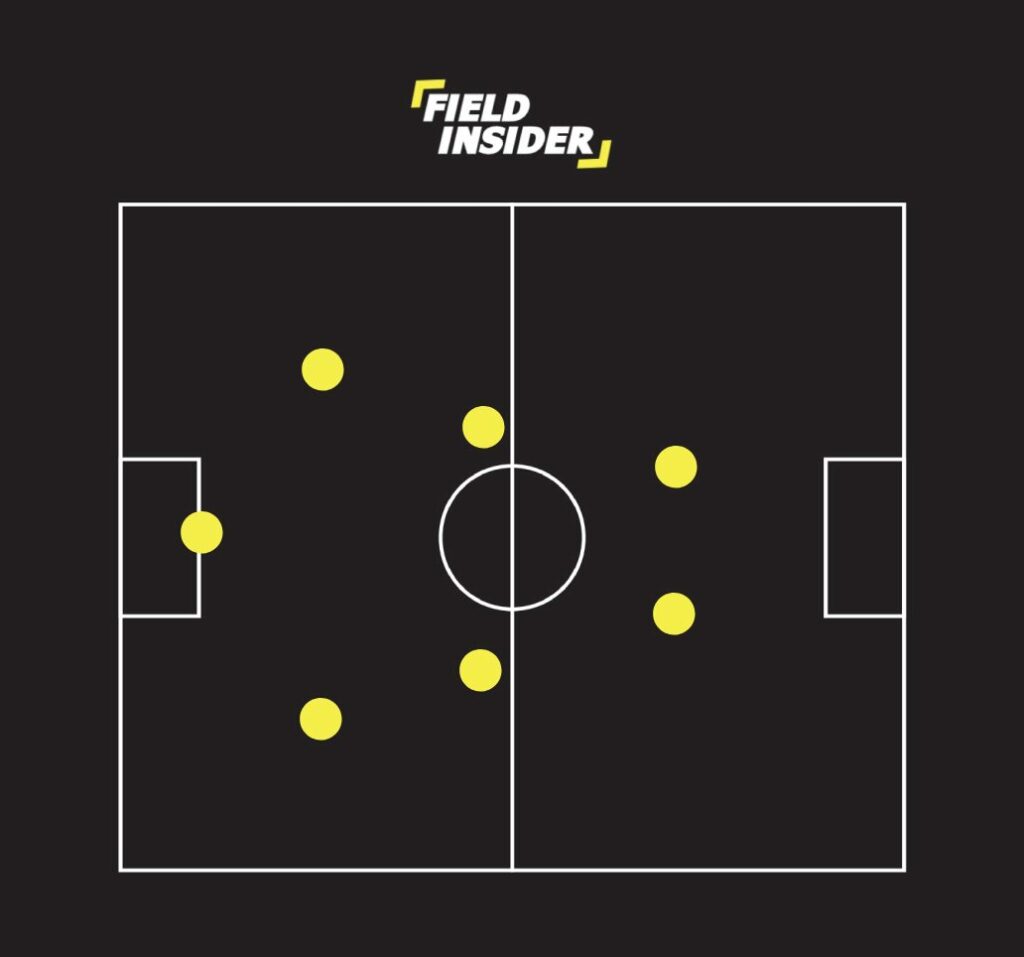
Overview of the 2-2-2 Formation
The 2-2-2 formation in 7-a-side football offers a highly flexible structure, balancing defensive security with offensive potential. This setup features two defenders, two midfielders, and two forwards, with the goalkeeper as the seventh player.
It’s designed to adapt quickly between defense and attack, providing solid coverage across the pitch while maintaining a threatening presence upfront.
Strengths
The primary strength of the 2-2-2 formation lies in its versatility and balance. With two players in each section of the field, teams can effectively transition between attacking and defending without leaving large gaps.
This symmetry allows for strong partnerships to develop across the pitch – defenders can work in pairs, midfielders can control the central area, and forwards can press the opposition’s defense or drop back as needed. This formation is particularly effective for teams with all-round players.
Weaknesses
One potential weakness of the 2-2-2 formation is the risk of overstretching the midfield. If the midfielders are drawn too far apart, the team can become vulnerable to counter-attacks through the center.
Additionally, without a designated player in a central attacking or holding role, teams might struggle to assert control during crucial phases of the game. Effective communication and understanding between players are essential to mitigate these risks.
Ideal Playing Style
The 2-2-2 formation suits teams that favor a dynamic, fluid style of play. It works well for squads with versatile players who can interchange roles effectively. The key is maintaining balance: ensuring that attacking forays do not leave the team exposed defensively, and that defensive duties do not stifle the team’s offensive capabilities.
Teams that excel in this formation often use quick, short passing and movements to disorient opponents, while also being vigilant and organized defensively. This formation requires players to be tactically aware and physically fit, as they will need to cover more ground and participate in both defensive and attacking actions.
Physical Demands in Youth 7-a-Side Football
The findings of the study, “Game demands of 7-a-side soccer in young players” illustrate key performance metrics for U14 and U12 players. These include mean heart rate and high-intensity runs.
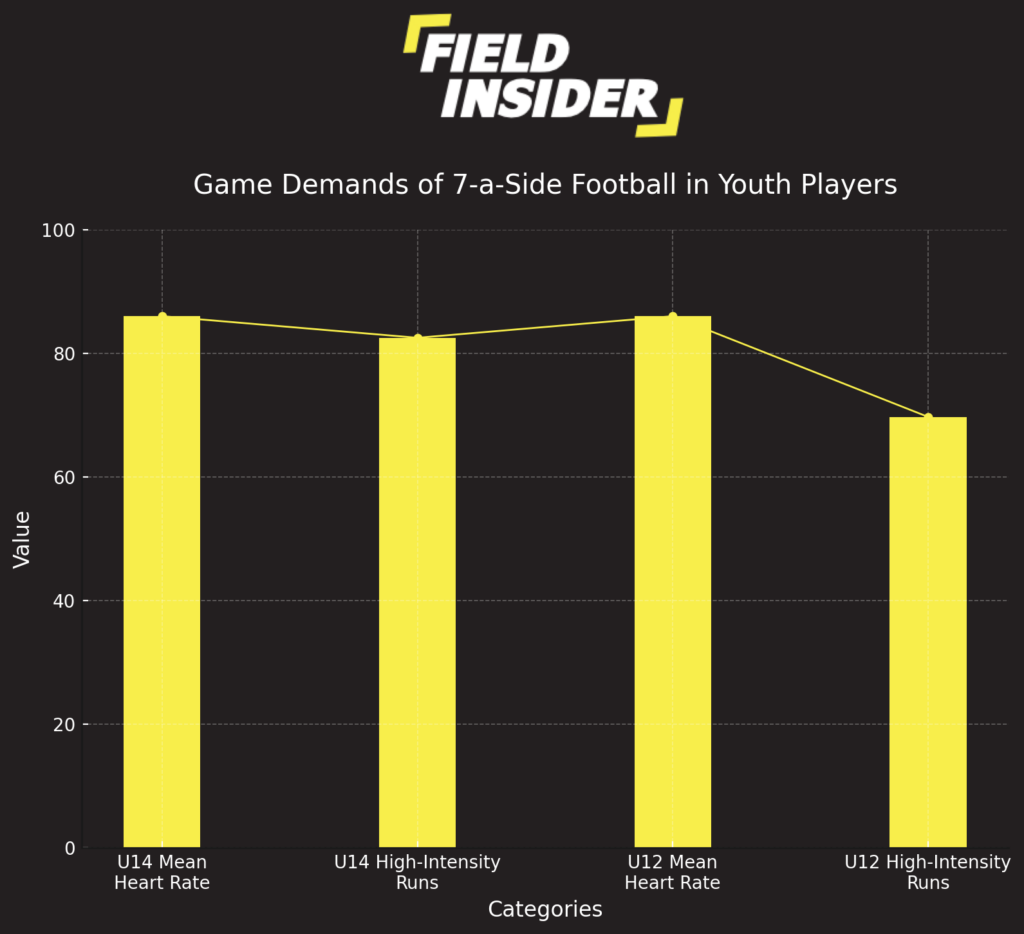
In the chart above, both age groups exhibit similar heart rates, indicating comparable effort levels. However, U14 players perform more high-intensity runs than U12s. This suggests that older players engage more aggressively during matches.
The data ties into the effectiveness of different 7-a-side formations. For example, the 2-3-1 formation may explain the higher intensity in U14s. This formation encourages forward movement and frequent sprinting. In contrast, U12 players might use a more conservative formation. This could lead to fewer high-intensity actions.
Understanding these dynamics can help coaches tailor training. They can ensure players develop the stamina and speed required for their specific roles in various formations. This insight is crucial for optimizing team performance and player development in youth football.
Tactical Considerations for Success
In the realm of 7-a-side football, tactical considerations extend beyond the basic structure of the formation. They delve into the nuanced aspects of player roles, communication, and in-game adaptability. Each element plays a critical role in orchestrating a winning strategy on the pitch.
Player Roles and Responsibilities
Understanding and defining player roles and responsibilities within your chosen formation is paramount. Each player should know their specific duties, both in offensive and defensive scenarios. This clarity helps in minimizing confusion and enhancing team cohesion.
For example, in a 2-3-1 formation, midfielders need to be clear about their dual roles: providing support to the defense and also fueling the attack. Players should be selected based on their strengths and how well they fit into these roles.
Importance of Communication and Coordination
Effective communication and coordination among team members cannot be overstated. This encompasses verbal communication, understanding non-verbal cues, and pre-planned movements.
Teams that communicate well can adapt quickly to changing situations on the field, maintain their formation, and exploit the opposition’s weaknesses. For instance, defenders and midfielders should coordinate to cover spaces and prevent opponents from penetrating their lines.
Flexibility in Adaptation During Matches
The ability to adapt during games is a critical tactical consideration. Teams must be prepared to change their formation or strategy based on the score, the time left, and the opponent’s tactics.
This flexibility could mean shifting from an aggressive stance to a more defensive approach if leading, or vice versa if chasing a game. Training sessions should include scenarios that mimic different game situations, helping players to adapt seamlessly when needed.
Tips for Choosing the Right Formation
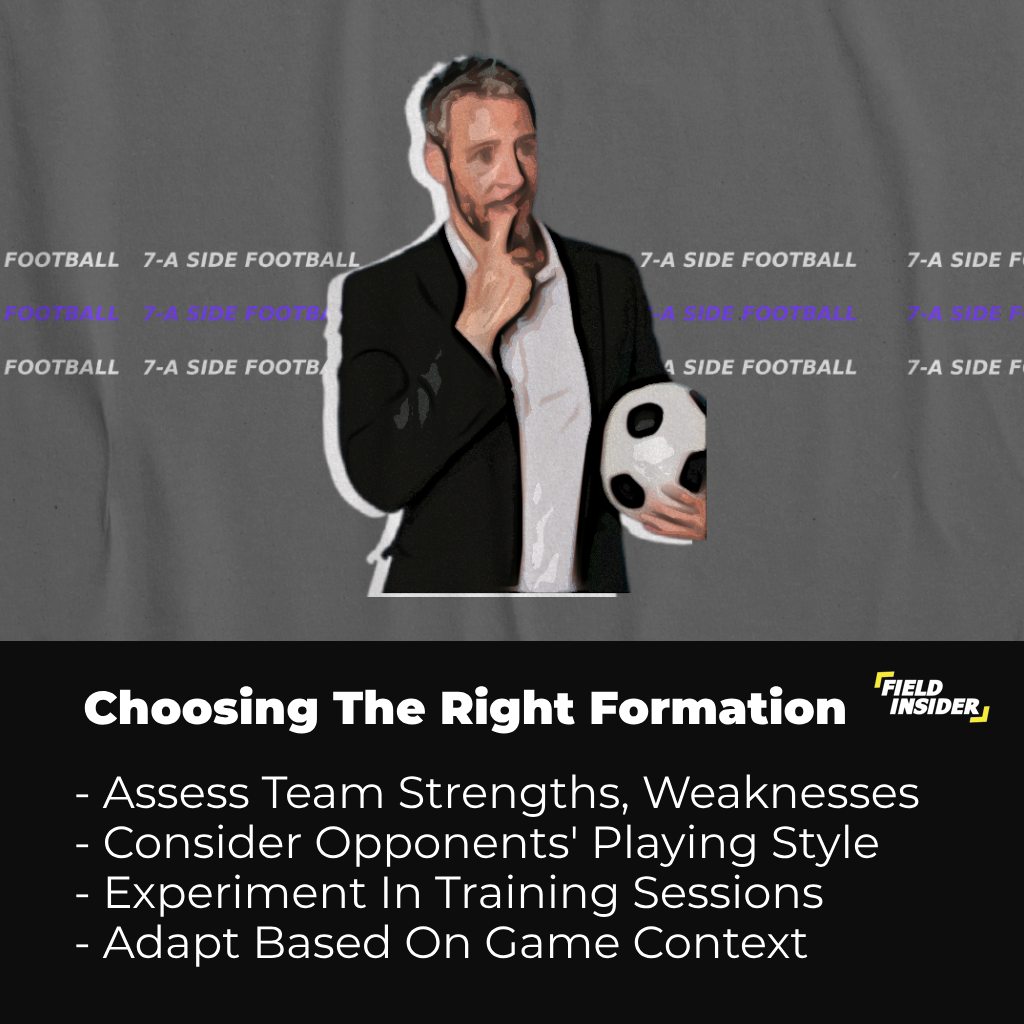
Assessing Your Team’s Strengths and Weaknesses
Understanding your team’s unique capabilities and limitations is the first step in choosing the right formation. Assess individual skills, team dynamics, and overall physical fitness. For instance, if your team has fast, agile players, a formation allowing quick transitions might be optimal.
Conversely, if your strength lies in defense, a more compact formation could be beneficial. Regular assessments will help tailor a formation that maximizes your team’s strengths while mitigating weaknesses.
Understanding Opponents’ Strategies
Analyzing your opponent’s playing style and formation can provide valuable insights into how to structure your own team. If your opponents are known for a strong attacking front, considering a formation with a solid defensive setup might be wise.
Similarly, if they have a weak defense, a more aggressive formation could exploit this. Understanding the opponent’s strengths and weaknesses allows you to adapt your formation and tactics effectively, giving your team a strategic advantage.
Experimentation and Adaptation in Training
Experimentation is crucial in finding the most suitable formation for your team. This involves trying out different formations in training and friendly matches to see what works best in various situations. Pay attention to how players adapt to these formations and how effectively they can switch roles if needed.
Flexibility is key; the ability to adapt to different formations based on the match scenario can be a significant advantage. Encourage feedback from players, and use it to refine tactics and improve overall team performance.
Conclusion
Choosing the right formation in 7-a-side football is crucial, yet it’s the blend of tactical understanding, player responsibilities, and adaptability that defines success. Teams should align their formations with their strengths and remain flexible to shifting dynamics during play.
This journey towards optimal gameplay combines strategy, skill development, and teamwork. Embrace these principles, apply them with purpose, and enjoy the enriching experience that 7-a-side football offers. Let the game inspire you to continuous improvement and shared triumphs on the field.


